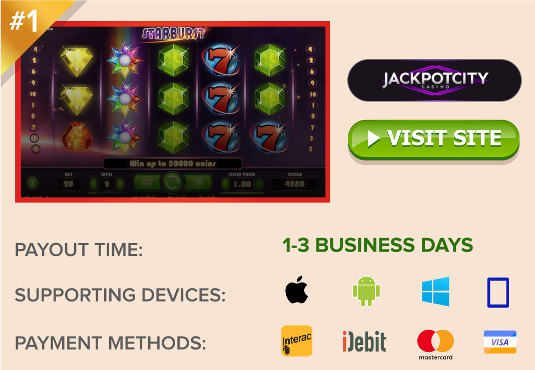Quick Pay Blackjack Rules and Tips
How to play Quick Pay 21, a blackjack game featuring early payouts and hedge betting against the dealer.
 Quick Pay Blackjack is, in many ways, a classic game of 21. It just happens to have a few extra options for players. One is the game’s namesake Quick Pay, wherein the player, if dealt dealt a natural two-card total of 18-20, can elect to end the hand right then and there, collecting an early payout. Another is a collection of hedge bets (side bets) that open up if the player doesn’t take a quick pay.
Quick Pay Blackjack is, in many ways, a classic game of 21. It just happens to have a few extra options for players. One is the game’s namesake Quick Pay, wherein the player, if dealt dealt a natural two-card total of 18-20, can elect to end the hand right then and there, collecting an early payout. Another is a collection of hedge bets (side bets) that open up if the player doesn’t take a quick pay.
This is a relatively new blackjack variant, having made its first trial-run appearance at the Planet Hollywood Casino in Las Vegas in the summer of 2019. Following a successful debut, Golden Dragon Gaming is looking to expand its availability in North America. As for whether it’s really worth playing, you’ll have to be the judge of that.
With basic strategy applied – and that includes knowing when to take the early payout and place hedge bets – you should be up against a house edge of 1.23% in PH’s 6-deck game. That equates to an RTP of 98.77%; not exactly a prime choice for strategic players, but decent for the recreational player looking for something more interesting than standard blackjack.
How to Play Quick Play 21
As previously mentioned, this game follows some pretty standard blackjack rules, outside of its Quick Pay and Hedge Bet options. These are both situation ally based, so I’ll start by walking you through the steps of a hand to explain when you can and can’t place them.
The game starts with each player making two requisite bets. One is the usual “Bet”, and the other is a “Surrender or Play” bet. I’ll call this the “S/P Bet”. All the usual cards are then dealt – two to each player and two to the dealer, one face up and one face down. Now things start to get interesting…
Player / Dealer Blackjack
The dealer will peek for blackjack if he has an Ace or 10 showing. If the dealer, or the player, or both, have blackjack, one of the following will occur, thereby ending the player’s hand:
| Blackjack(s) | Bet | S/P Bet |
| Dealer & Player have Blackjack | Push | Push |
| Player has Blackjack | Pays 6:5 | Push |
| Dealer has Blackjack | Lose | Push |
Quick Pay
Assuming a blackjack has not ended the hand at this point, we move on to the next possible opportunity; Quick Pay. It only applies if the player has been dealt a natural, two-card total of 18, 19 or 20. It doesn’t matter if it’s a soft or hard total, either one qualifies. In this situation, the player will have the option to collect an early payout, thus ending his hand. It is an optional move, not required. The following pay table is applied to all Quick Pays.
| Player’s 2-Card Hand Total is… | Bet | S/P Bet |
| 18 | Push | Push |
| 19 | Pays 2:1 | Push |
| 20 | Pays 1:1 | Push |
Take a quick look at both of the above pay tables and you should notice the S/P Bet always pushes. It cannot be won or lost in the early stages of the game. It is not pointless though. If the player does not claim an early payout, and the hand continues beyond this point, the S/P Bet is added to the traditional Bet, combining into one wager moving forward.
Hedge Betting
If the player is still active in the hand, he may elect to place Hedge Bets at this time. These are four optional side bets that the dealer’s hand will end in a total of 18, 19, 20, or 21. Bear in mind these are separate bets on each total – not one bet that the dealer will have any of these totals. Each number can be bet on individually. There are two known pay tables for Quick Pay Hedge Bets, with payout values based on the dealer’s up-card. I’ve supplied the house edge for each possible up-card/bet to help you decide whether it’s worth it.
| TABLE 1 |
Dealer Hand Ends with Total of…
|
|||
| Up-Card | 18 (Edge) | 19 (Edge) | 20 (Edge) | 21 (Edge) |
| Ace | 3:1 (17.36%) | 3:1(17.30%) | 3:1 (17.10%) | 8:1 (14.26%) |
| 2 | 5:1 (18.41%) | 5:1 (21.04%) | 6:1 (12.04%) | 6:1 (15.98%) |
| 3 | 5:1 (20.84%) | 6:1 (11.34%) | 6:1 (14.47%) | 6:1 (18.54%) |
| 4 | 6:1 (12.22%) | 6:1 (14.17%) | 6:1 (17.52%) | 6:1 (20.75%) |
| 5 | 6:1 (13.87%) | 6:1 (17.25%) | 6:1 (21.30%) | 5:1 (13.13%) |
| 6 | 6:1 (19.80%) | 6:1 (19.47%) | 7:1 (11.86%) | 5:1 (15.29%) |
| 7 | 5:1 (17.24%) | 10:1 (13.73%) | 10:1 (13.45%) | 10:1 (18.80%) |
| 8 | 1.2:1 (20.81%) | 5:1 (22.77%) | 11:1 (16.94%) | 11:1 (16.64%) |
| 9 | 6:1 (17.86%) | 1.5:1 (12.04%) | 6:1 (15.74%) | 12:1 (20.86%) |
| 10 | 6:1 (15.30%) | 6:1 (15.09%) | 1.2:1 (18.94%) | 20:1 (20.77%) |
| TABLE 2 |
Dealer Hand Ends with Total of…
|
|||
| Up-Card | 18 (Edge) | 19 (Edge) | 20 (Edge) | 21 (Edge) |
| Ace | 3:1 (17.36%) | 3:1 (17.30%) | 3:1 (17.10%) | 9:1 (4.74%) |
| 2 | 6:1 (4.82%) | 6:1 (7.88%) | 6:1 (12.04%) | 7:1 (3.98%) |
| 3 | 6:1 (7.65%) | 6:1 (11.34%) | 7:1 (2.25%) | 7:1 (6.90%) |
| 4 | 6:1 (12.22%) | 7:1 (1.90%) | 7:1 (5.74%) | 7:1 (9.43%) |
| 5 | 7:1 (1.57%) | 7:1 (5.43%) | 7:1 (10.05%) | 8:1 (2.27%) |
| 6 | 7:1 (8.34%) | 7:1 (7.97%) | 7:1 (11.86%) | 8:1 (4.71%) |
| 7 | 6:1 (3.45%) | 11:1 (5.89%) | 11:1 (5.58%) | 12:1 (4.04%) |
| 8 | 1.5:1 (10.01%) | 6:1 (9.89%) | 12:1 (10.02%) | 12:1 (9.69%) |
| 9 | 7:1 (6.12%) | 1.5:1 (12.04%) | 7:1 (3.71%) | 15:1 (2.60%) |
| 10 | 7:1 (3.19%) | 7:1 (2.96%) | 1.5:1 (7.89%) | 25:1 (1.90%) |
The Trade Off
As with any player-advantage rules in blackjack, the casino giveth and it taketh away. In this case, the trade offs for early payouts are cruel. The worst a Hard 17 Push rule. If the dealer is dealt or hits to a Hard 17, all active player hands will push. That’s better than a loss, but still a pretty harsh rule, especially combined with this second odds-crusher. Natural blackjack payouts are reduced to 6:5, and only apply to half of the total bet since the S/P Bet is always push.
Aside from the Quick Pay Blackjack rules detailed above, the following base game rules apply:
Specific Rules of Play
- Decks: 6
- Soft 17: Dealer Hits
- Hard 17: Dealer H17 Pushes
- Doubling: Yes, on any first 2 cards
- Splitting: Yes
- Double after Split: Yes
- Resplit Aces: No
- Draw to Split Aces: No
- Surrender: Yes, early only
- Dealer Checks for Blackjack: Yes
- Blackjack Pays: 6 to 5
Quick Pay Blackjack Strategy
The strategy for Quick Pay 21 is more complex, due to the extended betting options throughout. If you play your cards right, you can expect an RTP of 98.77%. I’m sure you can squeeze a few more tenths out of it with accurate card counting, but I haven’t worked any calculations for this.
Due to the potential to collect a Quick Pay on certain 2-card hands, the strategy charts are segmented into 2-Card Totals and 3+Card Totals, with Hard Totals and Soft Totals charts for each, plus a Pairs section for 2-Card hands. Please make sure you’re referencing the correct strategy chart for your current hand.
The left column contains the player’s current hand total. The right column foretells to the correct action based on the dealer’s face-up card.
How to Decide a Player’s Hard Hand w/ 2 Cards
| Hard Total | Correct action based on Dealer’s Up-Card |
| Up to 7 | Hit |
| 8 | Double against 6, otherwise Hit |
| 9 | Double against 2-7, otherwise Hit |
| 10 | Double against 2-9, otherwise Hit |
| 11 | Double |
| 12 | Stand against 2-7, otherwise Hit |
| 13 | Stand against 2-7 or 10, otherwise Hit |
| 14 | Stand against 2-10, Hit on Ace |
| 15-17 | Stand against 2-10, Surrender to Ace |
| 18 | Stand against 3-7, otherwise Quick Pay |
| 19 | Stand against 3-6 or 8, otherwise Quick Pay |
| 20 | Stand |
How to Decide a Player’s Soft Hand w/ 2 Cards
| Soft Total | Correct action based on Dealer’s Up-Card |
| 13-14 | Double against 4-6, otherwise Hit |
| 15 | Double against 3-6, otherwise Hit |
| 16 | Double against 3-7, otherwise Hit |
| 17 | Double against 2-7, otherwise Hit |
| 18 | Double against 2-7, otherwise Quick Pay |
| 19 | Double against 4-6, Stand on 3 or 8, otherwise Quick Pay |
| 20 | Quick Pay against 7 or 10, otherwise Stand |
How to Decide Pairs w/ 2 Cards
Understanding how to play Quick Pay 21 when dealt any pair is centrifugal to achieving max RTP.
| Pairs | Correction action based on Dealer’s Up-Card |
| 2-2 | Split against 2-7, otherwise Hit |
| 3-3 | Split against 2-7, otherwise Hit |
| 4-4 | Split against 3-7, otherwise Hit |
| 5-5 | Double against 2-9, otherwise Hit |
| 6-6 | Split against 2-7, otherwise Hit |
| 7-7 | Split against 2-7, Stand on 8-10, otherwise Hit |
| 8-8 | Split against 2-8, Stand on 9-10, otherwise Surrender |
| 9-9 | Split against 2-8, otherwise Quick Pay |
| 10-10 | Quick Pay against 7 or 10, otherwise Stand |
| A-A | Split |
How to Decide a Player’s Hard Hand w/ 3+ Cards
| Hard Total | Correct action based on Dealer’s Up-Card |
| Up to 11 | Hit |
| 12 | Stand against 2-7, otherwise Hit |
| 13 | Stand against 2-7 or 10, otherwise Hit |
| 14 | Stand against 2-10, Hit on Ace |
| 15-21 | Stand |
How to Decide a Player’s Soft Hand w/ 3+ Cards
| Soft Total | Correct action based on Dealer’s Up-Card |
| 14-17 | Hit |
| 18 | Stand against 2-8, otherwise Hit |
| 19-21 | Stand |
 Jackpotcity.com is our editorial pick for your gaming needs. Currently offering an entire suite of casino games, as well as a wide range of Canadian deposit options, JackPotCity truly offers world-class gaming.
Jackpotcity.com is our editorial pick for your gaming needs. Currently offering an entire suite of casino games, as well as a wide range of Canadian deposit options, JackPotCity truly offers world-class gaming.





